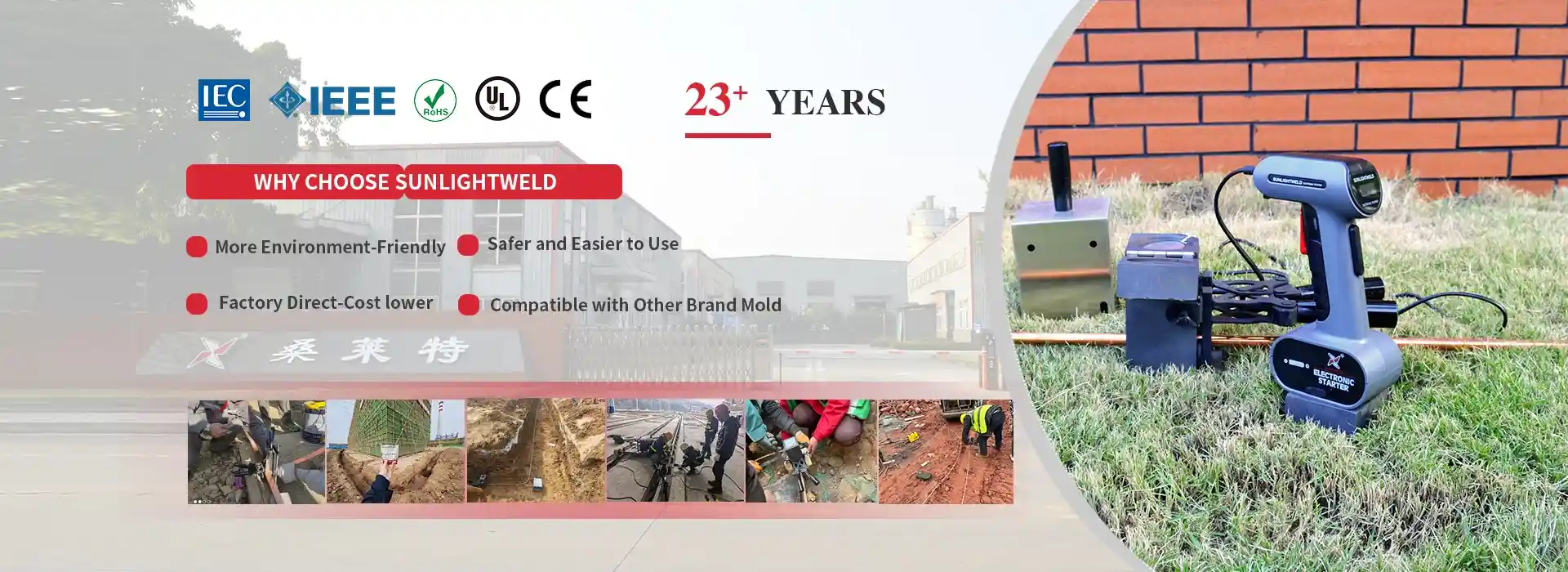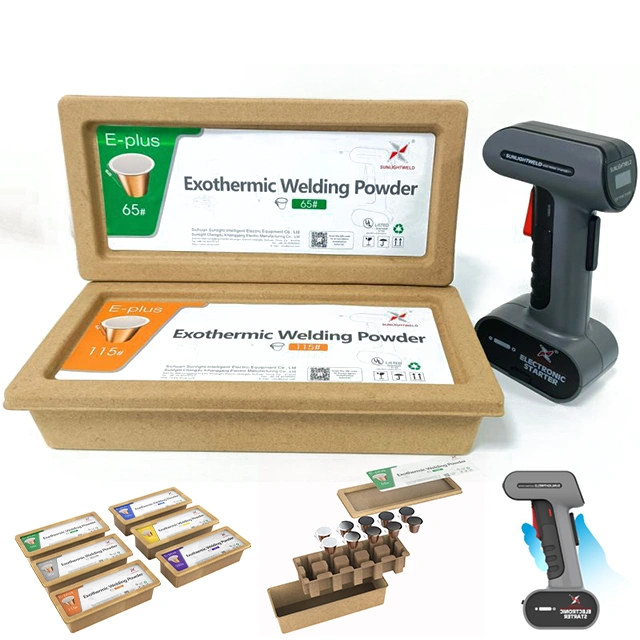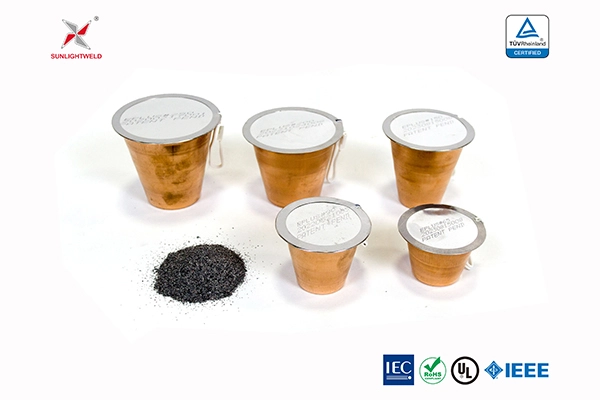In modern electrical infrastructure, exothermic welding is recognized as one of the most reliable and efficient methods for creating permanent, high-conductivity bonds between conductors. It is widely used in grounding systems for power substations, telecommunications, transportation, and lightning protection. The chemical reaction involved produces temperatures above 1400°C, fusing conductors together into a single, corrosion-resistant joint. Among the leading solutions in the market, Sunlightweld exothermic welding for grounding stands out with internationally recognized quality and innovation. It is certified under IEEE 837, UL 467, IEC 62561-1, CE, and RoHS, and it has also been awarded American patents for its proprietary designs. These achievements underscore its global credibility and engineering excellence.But while the science behind exothermic welding is precise, the process itself is unforgiving. A single mistake can result in weak joints, dangerous failures, or unnecessary costs. This article Sunlightweld provides a comprehensive overview of the most common mistakes in exothermic welding and how to prevent them—based on real-world experience and expert analysis.

Critical Nature of Exothermic Welding
The exothermic welding process creates a molecular bond that ensures long-term reliability in grounding systems. Unlike mechanical clamps or bolted connections, these joints do not loosen over time and maintain consistent electrical conductivity, even under harsh environmental conditions.
Sunlightweld electronic ignition exothermic welding offers several core advantages that set it apart:
Molecular bonding eliminates any risk of loose connections.
Withstands repeated fault current surges without degradation.
Does not age over time like mechanical joints.
Outlasts the conductor to which it is bonded.
Provides the lowest possible grounding path resistance.
Safer and easier to use, requiring minimal training and protection.
Eco-friendly, safe, user-friendly, and cost-effective, while remaining compatible with molds from other brands.
However, these benefits are only realized if the welding procedure is followed precisely. Common errors—such as incorrect mold usage, poor preheating, or faulty material handling—can compromise weld integrity, leading to serious performance and safety issues.
Proper training, equipment handling, and a thorough understanding of the welding environment are necessary to avoid these issues. Attention to detail at each step of the process significantly enhances the quality and durability of the weld. Every project involving exothermic welding must prioritize precision and control to ensure that the outcomes align with industry standards and safety expectations.
Operational Mistakes in Exothermic Welding and How to Prevent Them
Most failures in exothermic welding can be traced to incorrect procedures during preparation, execution, or post-weld handling. These hands-on mistakes are preventable through proper training, attention to detail, and consistent use of best practices. Operators must familiarize themselves with both the tools and materials involved to mitigate common risks.
False Welds: A Deceptively Dangerous Result
A false weld occurs when molten copper fails to properly bond with the conductor. This can be one of the most dangerous errors because the joint may appear acceptable, while actually offering little or no conductivity or mechanical strength.
Common Causes:
Mismatched mold and conductor size
Loose or misaligned conductors
Inadequate preheating (leaving moisture inside)
Open mold gaps allowing copper leakage
Prevention:
To avoid false welds, technicians should always consult manufacturer guidelines when selecting molds and powder. The conductor and mold must match perfectly to allow a seamless fusion. Conductors must be held tightly in place, and all surfaces should be preheated adequately to eliminate moisture. Proper sealing using mold sealer or high-temperature cotton ensures the molten copper remains where it is needed.
Welds Sticking Inside the Mold
A welded joint should come out cleanly once the mold is opened. If it sticks, this often indicates issues that can damage the mold or slow productivity. This situation can be frustrating and often leads to increased tool wear or even project delays.
Common Causes:
Insufficient preheating
Use of incorrect or low-quality powder
Prevention:
The key is to preheat thoroughly and uniformly. This drives out residual moisture that could interfere with the welding reaction. Only use powders specified for the conductor and mold configuration being used. Manufacturers spend extensive resources calibrating these specifications, and any deviation can compromise weld quality.
Air Pockets and Bubbles in the Weld
Air bubbles or voids inside the weld weaken the structure and reduce its ability to conduct electrical current. These flaws are typically caused by moisture or contamination, and they are especially difficult to detect without cutting the joint open.
Common Causes:
Lack of preheating, allowing moisture to remain
Contaminated conductor surfaces
Prevention:
Always dry both mold and conductors completely using a gas torch. The metal should change color slightly, indicating sufficient heat. Conductor surfaces should be scrubbed clean with a wire brush to remove oxidation and foreign particles. This ensures better flow and bonding of the molten copper.
Material and Equipment Errors in Exothermic Welding
While procedure plays a huge role, the quality and compatibility of materials and equipment also determine the success of exothermic welding. Even with perfect technique, using the wrong mold or degraded powder can cause failure. Material issues can lead to structural instability and long-term degradation in joint quality.
Incomplete Joints: When the Weld Falls Short
A joint that is only partially filled or poorly formed compromises both mechanical security and current-carrying capacity. Incomplete joints can also accelerate wear and corrosion, which may lead to failure during electrical faults.
Common Causes:
Using insufficient welding powder
Undersized conductors that don't fit the mold cavity
Mismatch between mold type and powder number
Prevention:
Carefully verify the powder-to-mold compatibility. Always measure and check the conductor size before welding. Use properly calibrated molds and the right powder amount as per instructions. Minor oversights in these aspects often result in incomplete and ineffective welds.
Burnt or Blackened Joint Surfaces
A blackened or overheated weld may be a sign of mold fatigue or excessive thermal stress, both of which can degrade performance over time. This often indicates that the equipment has been overused or that the process cycle time is too short.
Common Causes:
Repeated welding in quick succession without cooling
Excessive oxidation from continuous high-temperature use
Prevention:
Allow each mold to cool after 2–3 uses before reheating. Maintain a proper cycle to avoid mold overheating. Molds are engineered for specific thermal tolerances, and repeated use without breaks causes deterioration. Regular inspections and scheduled maintenance help prolong mold lifespan.
Impurities or Rough Texture on the Weld
A weld with a grainy, uneven surface is not only unsightly—it may indicate that the reaction did not proceed cleanly, affecting structural integrity. Such imperfections also hinder electrical performance and may fail safety inspections.
Common Causes:
Mold not cleaned between uses
Moist or poorly blended powder
Prevention:
Use a soft brush to clean out any leftover residue from previous welds. Always store powder in a dry, airtight environment to avoid moisture contamination. Before use, inspect powder for clumps or discoloration. These small checks can significantly reduce the occurrence of impurities.
Modern Tools and Techniques to Improve Exothermic Welding
As demands for safety, speed, and precision increase, manufacturers have introduced advanced tools to improve exothermic welding for grounding workflows. These innovations address many of the common human errors found in the traditional method.Sunlightweld electronic ignition exothermic welding replaces traditional flint-based methods, offering a smarter, safer, and more efficient solution for exothermic welding:
Electronic Ignition Exothermic Welding

Traditional exothermic welding involves manual ignition using a flint or spark rod. Modern electronic ignition systems, however, offer far greater consistency and safety.
Sunlightweld electronic ignition system with one-button start allows users achieve fast, stable, and hands-free ignition even in challenging environments. The integrated LCD screen of electronic ignition starter displays battery status and remaining ignitions, allowing operators to manage usage with confidence. Safety is prioritized through a 1.8-meter ignition cable, a dual-switch design, and a warning alert system that prevents accidental activation. Unlike conventional ignition methods, this system requires no open flame or flammable powders, making it safer for both users and the environment. It also supports air transport thanks to its non-explosive formula and is packaged with eight layers of protective materials for secure storage. Most importantly, the entire welding operation can be completed in under one minute, significantly reducing labor time and increasing efficiency on site.
Exothermic Welding Power Cup

Sunlightweld Eplus exothermic welding power cup simplifies the welding process while ensuring exceptional bonding quality and environmental safety. Each exothermic powder cup contains a pre-measured and optimized thermite mixture that guarantees 100% ignition reliability and a complete, efficient reaction. You simply place the exothermic powder cup in the mold, attach the ignitor, and press the button.During welding, the exothermic powder cup itself fuses with the material, leaving virtually no residue behind and eliminating the need for post-weld cleanup. This residue-free performance not only enhances safety but also supports eco-friendly practices. The resulting joint forms a molecular bond that outlasts the conductor, resists corrosion, and maintains stability even under repeated fault currents. Designed to deliver the lowest possible grounding resistance, these exothermic welding power cups ensure high-performance connectivity across industries.
By incorporating these tools, you can reduce operator fatigue, minimize waste, and achieve more reliable results with exothermic welding.
Exothermic welding is a powerful solution for building durable and permanent connections in grounding systems. But its effectiveness depends entirely on precision, preparation, and prevention. Whether you're working with traditional powder and molds or modern electronic systems, the fundamentals remain the same:
Choose compatible materials using official specifications.
Preheat and clean components rigorously.
Use the right amount and type of welding powder.
Incorporate new tools where appropriate to streamline operations.
By understanding the most common mistakes and applying best practices, professionals can ensure every weld meets the high standards that critical electrical systems demand.
https://www.sltup.com/Avoiding-the-Sparks-of-Failure-Common-Errors-in-Exothermic-Welding.html
https://www.sltup.com/Exothermic-Welding
https://www.sltup.com/Electronic-Ignition-Exothermic-Welding.html
www.sltup.com
Sunlightweld
About Author
You may also like
-
The Ultimate Guide to Circuit Board Tweezers: Precision Tools for Professional Electronics Assembly by VETUS
-
How to Find a Reliable Starter Manufacturer for Your Vehicles
-
Enhancing Pipeline Stability with Advanced Pipe Supports Hangers
-
Silicone Cable Extrusion vs. PVC Extrusion: Key Differences You Should Know
-
Top 5 Applications of Coil Winding Machines in 2025
